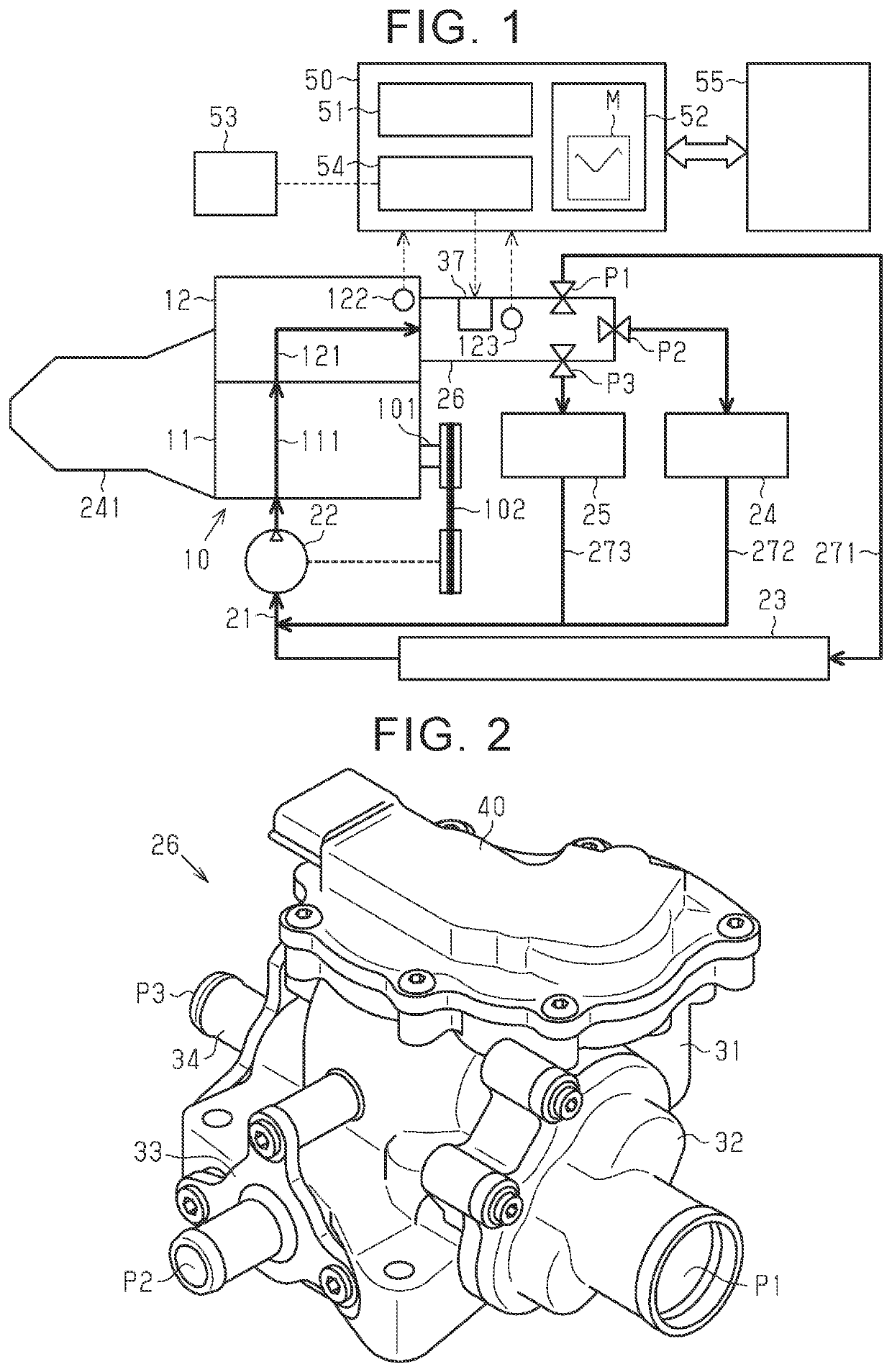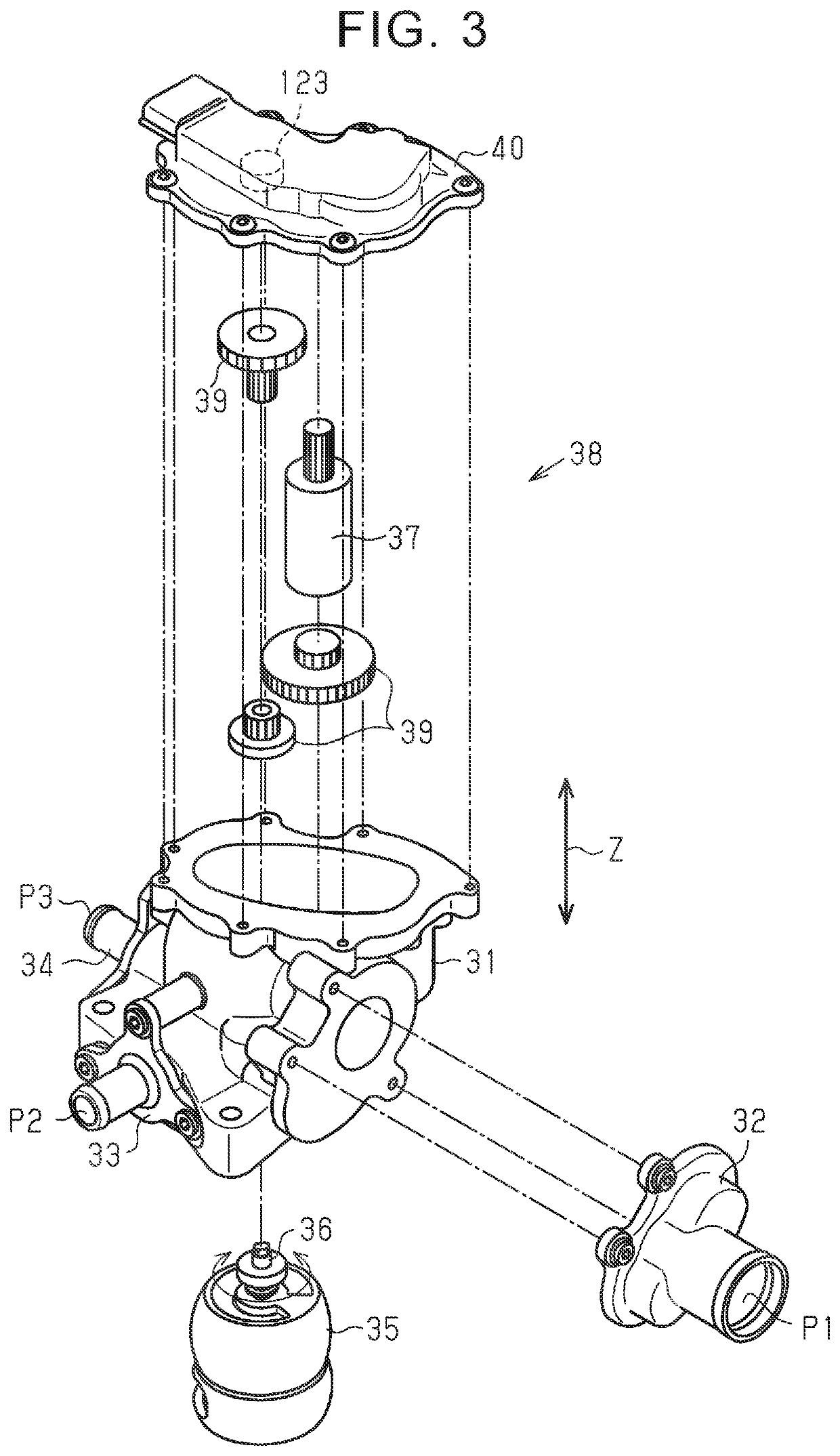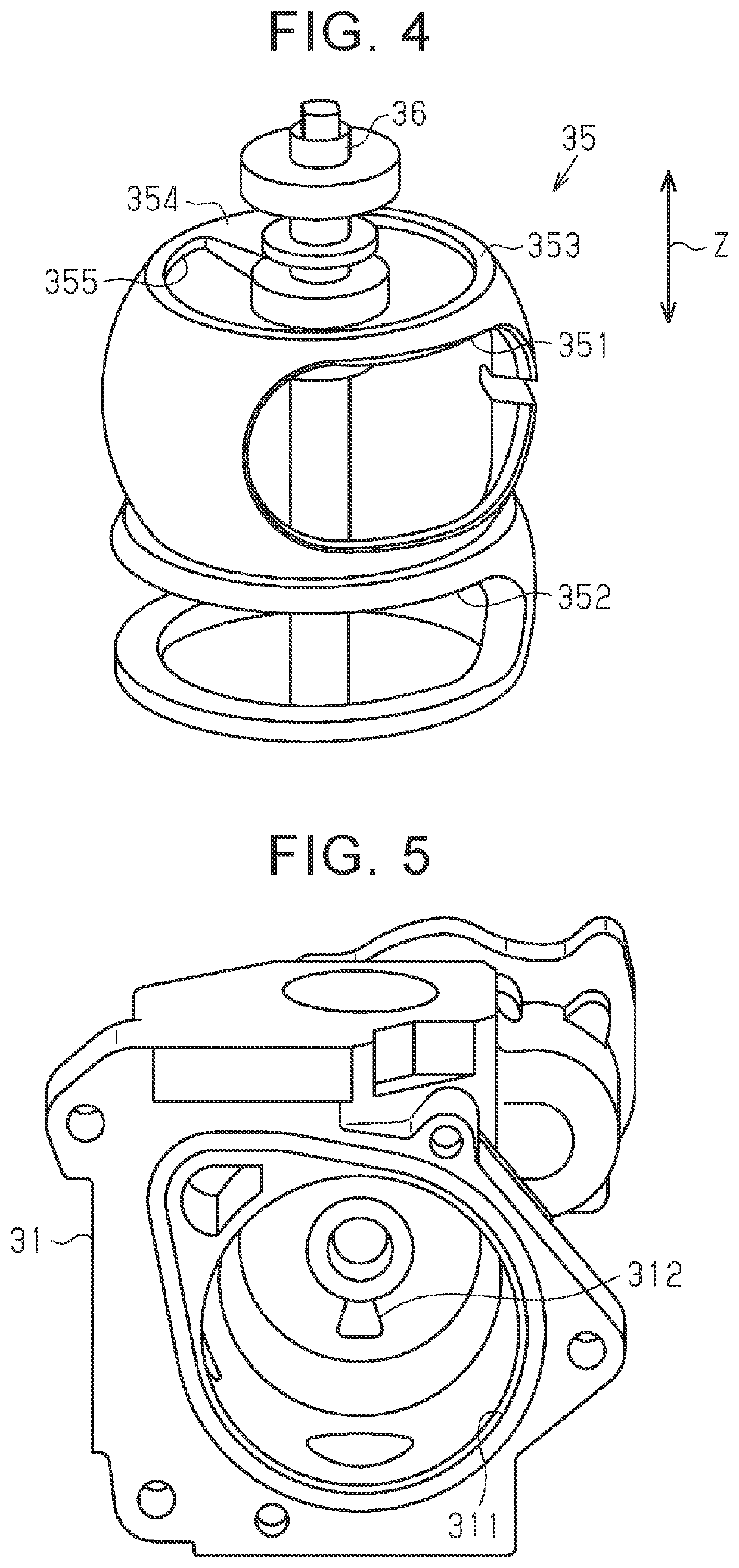Engine cooling device
a cooling device and engine technology, applied in the direction of machines/engines, mechanical devices, cylinders, etc., can solve the problems of long time needed to open the electronic control valve, high hydraulic pressure, and high water jacket hydraulic pressur
- Summary
- Abstract
- Description
- Claims
- Application Information
AI Technical Summary
Benefits of technology
Problems solved by technology
Method used
Image
Examples
Embodiment Construction
[0027]An engine cooling device according to one of the embodiments will be described hereinafter with reference to FIGS. 1 to 8. The engine cooling device according to the present embodiment is applied to an engine mounted on a vehicle having an automatic transmission. As shown in FIG. 1, the engine cooling device according to the present embodiment is equipped with a circulation circuit 21 through which coolant flowing through a water jacket 111 in a cylinder block 11 of an engine 10 and a water jacket 121 in a cylinder head 12 of the engine 10 circulates. The circulation circuit 21 is provided with a mechanical water pump 22 that discharges coolant toward the water jacket 111 in the cylinder block 11. Besides, the circulation circuit 21 is provided with three heat exchangers, namely, a radiator 23, an ATF warmer 24, and a heater core 25 of an air-conditioner for the vehicle. The radiator 23 cools coolant through the exchange of heat with outside air. The ATF warmer 24 heats up or ...
PUM
 Login to View More
Login to View More Abstract
Description
Claims
Application Information
 Login to View More
Login to View More - R&D
- Intellectual Property
- Life Sciences
- Materials
- Tech Scout
- Unparalleled Data Quality
- Higher Quality Content
- 60% Fewer Hallucinations
Browse by: Latest US Patents, China's latest patents, Technical Efficacy Thesaurus, Application Domain, Technology Topic, Popular Technical Reports.
© 2025 PatSnap. All rights reserved.Legal|Privacy policy|Modern Slavery Act Transparency Statement|Sitemap|About US| Contact US: help@patsnap.com



